Woodpeckers
at the
Cawthra Bush
A web-site to get more details
about this outstanding woodpeckers is;
http://www.on.ec.gc.ca/wildlife/wildspace/intro-e.html
or
http://www.audubon.org/local/sanctuary/corkscrew/Birds/Woodpeckers.html#PIWO
The outstanding features of this bird are, well all of them. Its size, some 18 inches in overall length and 30 inches in wingspan. It is the only woodpecker with a crest, a big red one, on the top of its head. The sound of it cutting a hole right into the centre of a tree can sound like jack hammer being used or it could to drumming on a tree to proclaim its territory or even to get insects to come out of the tree. Its wing beats are a clue as well, two beats and glides. It cuts the largest holes in trees of all the woodpeckers. It is these holes or cavities that many other birds and animals will nest in or use to den in. Their work is very important to a healthy forest ecosystem. These holes can be so big they cut the tree in haft, earning it the name "Master wood-chopper". When it comes to speeding up the process of a tree being composted, they don't get enough credit. They eat a wide variety of food, fruit, nuts, insects and prefers carpenter ants. They are a wetlands bird.
This is from a letter sent to the City of Mississauga's urban forest committee (UFMAC). "Nov. 10/01 the Leader of the Green Party of Ontario, Frank de Jong, was given a tour of the Cawthra Bush by myself. It was a lovely autumn day and the wild life was out as if it wanted to be seen. Not only was there two Downy Woodpeckers who were only a few feet from us, both on the same tree at times but a Pileated Woodpecker appeared to follow us through the forest. The enclosed pictures show not just the Pileated Woodpecker seen that day, (haft up the tree), but also pictures taken Dec. 5 (at the base of a tree and on a stump), when I saw two Pileated Woodpeckers at the same time. They appeared to be a mated pair, the male has the larger red head and more white on the throat. It is interesting that the female was checking out a stump right beside the South Service Road."
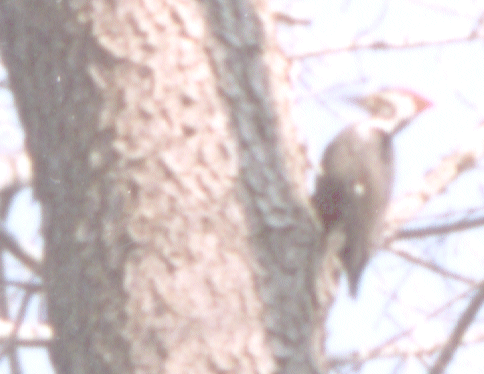
Comments:
The above picture was
by the Green Party. Below are all mine.
Details:
Date:
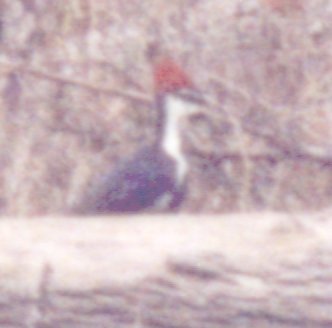
Comments:
The Pileated Woodpecker
in this picture showed me how determine they go after their food, which
is often carpenter ants, deep inside stand dead trees or logs on the ground.
This log was only a couple feet off the ground but still this bird made
the effort to hang upside down to peck at its underside.
Details:
I understand the male has more
white on its neck then the female, so going by the pictures and there being
two of them very close to each other, the two in these pictures should
be a breeding pair.
Or maybe one is a juvenile?
What do you think?
Same one again below.
Date:
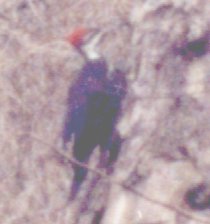
Comments:
Details:
Date:
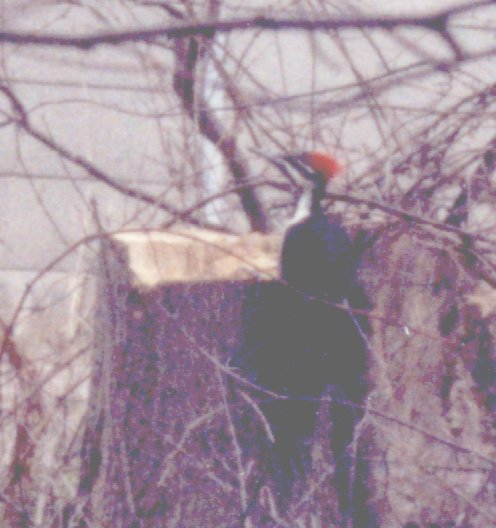
Comments:
Details:
This is the one that went
after a stump right beside a sidewalk and a well used road. The wall
in the back ground is the sound wall for the Queen Elizabeth Highway.
More black on this ones throat.
Date:
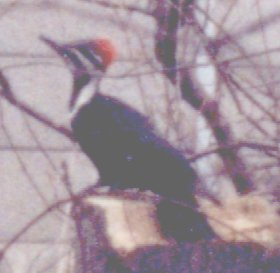
Comments:
Details:
Another shot.
Date:
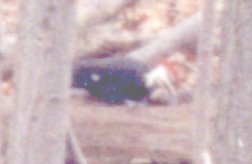
Comments:
As
I was taking pictures of the one on the stump, the sound of more loud pecking
could be heard behind me.
Details:
These pictures were taken in
the north end of the Cawthra Bush. An area many called a low quality
woodland, too wet for a park and that it should be built in.
Date:
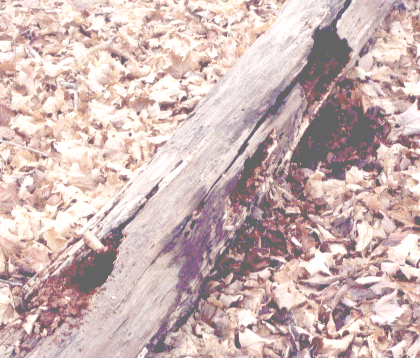
Comments:
This is the effect
that the above Pileated Woodpecker had on that log. Below are more
examples of the Master wood-chopper's work.
Details:
Date:
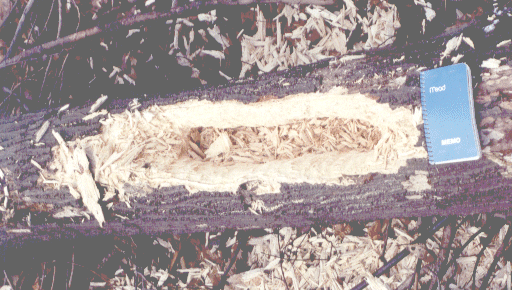
Comments:
This log has been
chipped right into its centre.
Details:
That note book is 3X5 inches.
Date:
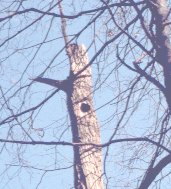
Comments:
This is a tree that
it is believed Wood duck were nesting in, a section of this tree,
just above this hole, that fell last year.
Details:
The tree is right beside the Salamander breeding pond.
Date:
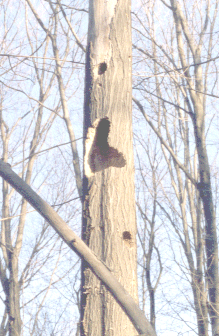
Comments:
In case anyone doubted
a Pileated Woodpecker could cut a tree in haft. God help us if they
should learn how to use chain-saws!
Details:
Date:
PLEEASSE SIGN OUR PETITION
It will make a difference!
Home page - Main Table of Contents - Back a page - Back to Top